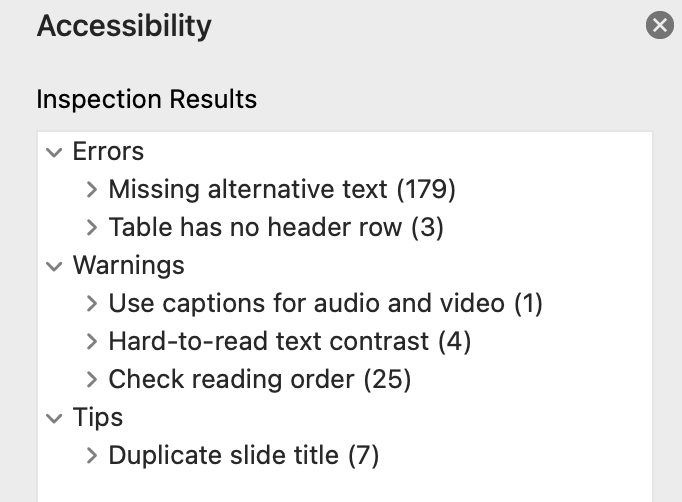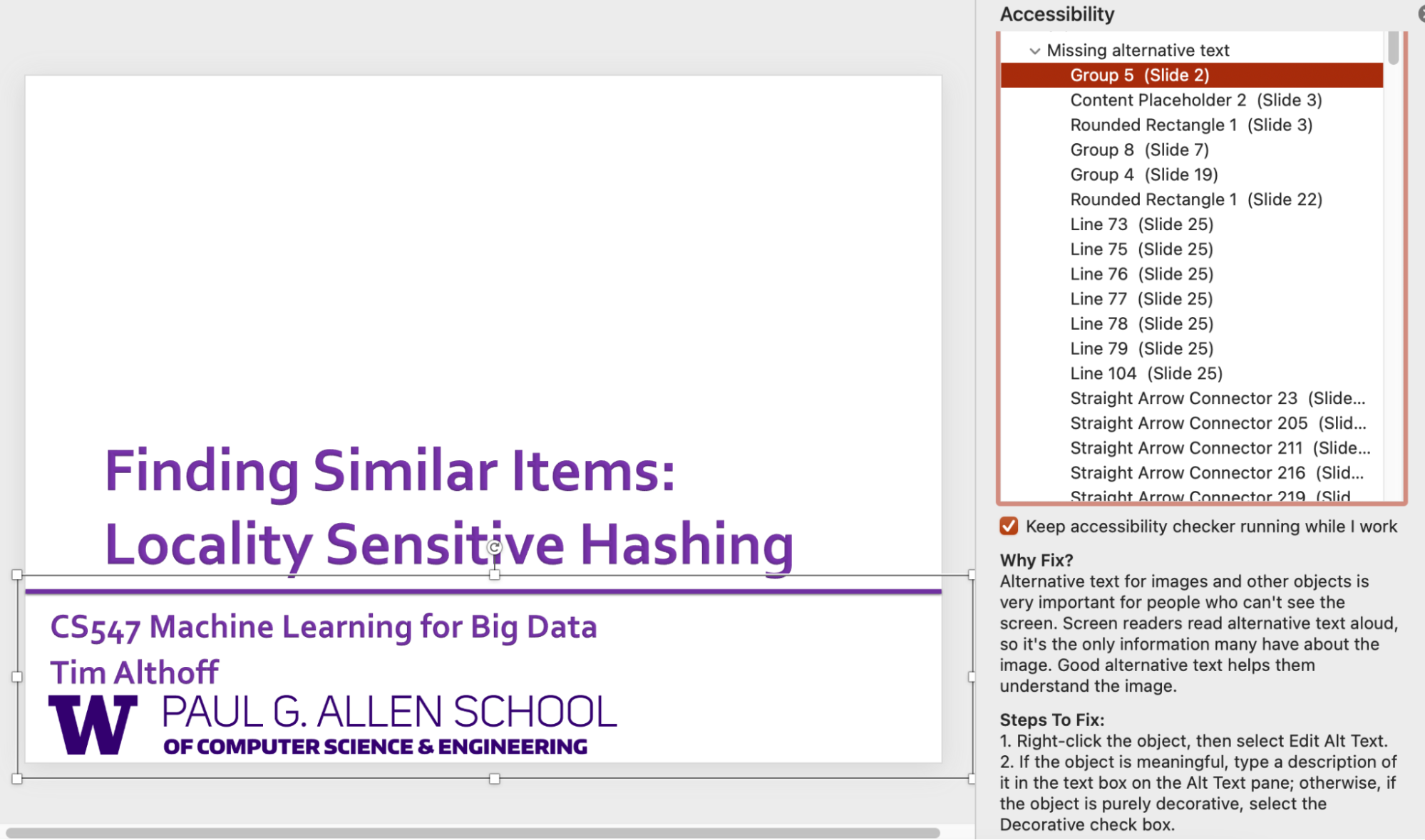Check Accessibility
Check Accessibility is a built-in acccessibility checker in PowerPoint. It gives you an overview of potential accessibility issues on your slides. It is a great tool to help you identify most potential issues. However, it is not perfect. For example, it may flag some issues that are not inaccessible. Therefore, you should always double-check the flagged issues and make sure they are actually accessibile.
1. Launch the accessibility checker.
To launch the accessibility checker: select Review → Check Accessibility.

2. Check the accessibility panel.
You can check the accessibility panel on the right after clicking the button. Now you can see there are so many errors on our slide.

3. Check the details of each error and warnings.
When you click into an error, PowerPoint gives you recommendations on how to fix these issues. For example below, “Group 5” is missing alternative text. It turns out that we didn’t add alt text to the “Paul G. Allen School of Computer Science & Engineering” logo, which is an image.
